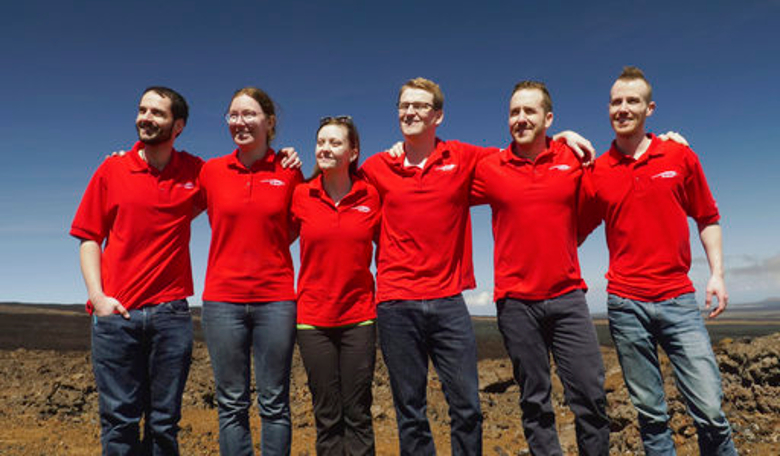What would it be like to live on Mars? Well, perhaps the Six NASA-backed research subjects who have been tucked away in a Mars-like habitat on a remote Hawaii island for the last eight months, will be able to shed some light on what it feels like.
The group, made up of four men and two women emerged from isolation yesterday to swiftly take advantage of Earth grown tropical fruits - a no doubt much welcome change of diet from the freeze-dried food they had mostly been consuming while conducting the experiment.
The aim of the study was to better understand the psychological impacts a long-term space mission would have on astronauts who made the journey to Mars - a challenge that some people are working towards making real in the next few decades.
"It’s really gratifying to know that the knowledge gained here from our mission and the other missions that HI-SEAS has done will contribute to the future exploration of Mars and the future exploration of Space in general," said science officer Samuel Paylor on Sunday.
HI-SEAS stands for ‘Hawaii Space Exploration Analog and Simulation’ and refers to semi-portable, low-impact unit with a habitable volume of ~368 cubic metres and a usable floor space of ~111 square metres, that is located on the Mauna Loa side of the saddle area on the Big Island of Hawaii. At approximately 8200 feet above sea level, the area provides a distinct setting in which to mimic an isolated Mars-like environment.
The site is accessible all year round, and coupled with the minimal variation in weather, the site is ideal for those wanting to study what confinement in an isolated location is like for months at a time.
The site is a former cinder rock quarry on the side of a spatter cone and the the weathered basaltic materials found in this part of Hawaii are reminiscent of the regolith found Mars.
Not only does HI-SEAS give would-be astronauts a taste of what Mars might be like from a physical and geological perspective, but the habitat is also designed to simulate how contact with recipients on Earth would work, as a Mars-like 20-minute delay on message reception each way is imposed on the crew.
Aside from testing ways to help the crew cope with stress, the study also looked at how compatible everyone was with each other. To do this, the crew wore specially-designed sensors that measured voice levels in order to gauge their moods.
"We've learned, for one thing, that conflict, even in the best of teams, is going to arise," said the project's lead investigator, University of Hawaii professor Kim Binsted. "So what's really important is to have a crew that, both as individuals and a group, is really resilient, is able to look at that conflict and come back from it."
The project is the fifth in a series of six NASA-funded studies at the University of Hawaii facility and the research will prove invaluable if and when the time for an actual mission to Mars gets the go ahead.
"There are certainly human factors to be figured out, that's part of what HI-SEAS is for," said the team's information technology specialist, Laura Lark, in a video message recorded within the dome. "But I think that overcoming those challenges is just a matter of effort. We are absolutely capable of it."











